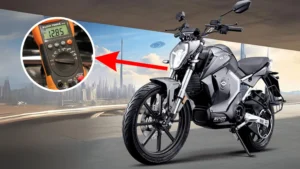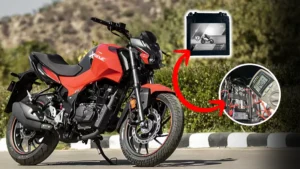It is essential to maintain a healthy bike battery as it would lead to reliable performance and also it would reduce avoidable breakdowns of bike. By checking your bike’s battery regularly would lead to increased in the lifespan and would help in running the bike smoothly. This article would help in guide through the process of checking and monitoring your bike battery’s health and also it has address some of the FAQs related to this topic.
Signs of a Weak or Failing Battery:
Before knowing the testing process, it is important to be aware of the signs that has been shown by the battery that is been failing. These include:
- There would be slow cranking while starting the bike.
- The headlights would be dimmed and also there will be problems in the electrical components.
- The battery will be overheated and also there will be swelling.
- The battery will not be able to hold the charge.
If you are facing any of these problems then you should perform a thorough check of the battery health.
Step 1: Conducting a Standing Voltage Test:
A standing voltage test is the simplest way to assess your battery’s charge level. Follow these steps:
- Turn off your bike and also make sure that it has been sitting for at least a couple of hours.
- A digital multimeter is been connected to the battery terminals, in the negative (-) terminal the black lead is connected and on the positive (+) terminal the red lead is connected.
- After the connection a reading is being taken of the battery’s voltage. Read between 12.6 and 12.8 volts is considered to be healthy.
- In case the voltage is below 12.4 volts, the battery may need to be recharged or replaced.
Step 2: Monitor the Battery Under Load
To determine if your battery can handle a load, perform the following test:
- Start the bike and let it idle, while the multimeter is still connected.
- The voltage should not drop below 9.6 volts over 10 seconds or so.
- If in the case, the voltage drops or the bike is not being started, then the battery may be weak or the charging system could be malfunctioning.
Step 3: Current Draw Test is being performed
A current draw test is essential in identifying any parasitic drains on your battery. You’ll need a load tester for this:
- All the electrical components are turned off and the key is being removed from the ignition.
- Battery terminals is connected to the load tester.
- The amps of the current draw must be 0.1 amps (100 milliamps), it should not exceed the 0.1 amps, the current draw should be done after 30 minutes.
- An electrical issue may occur that could cause the battery to drain if the current draw is higher.
Also Read: How to Charge Bike Battery at Home
Frequently Asked Questions
At least once a month standing voltage test should be done and a load test should be done every six months.
It is essential to always follow the manufacturer’s instructions and safety precautions before charging bike’s battery at home, but moreover it is safe, if it is been done safely.
Batteries are of two types- traditional type and modern type. Lead-acid batteries is of traditional type, while lithium-ion batteries are becoming more common in modern bikes. Lithium-ion batteries have a different resting voltage range (12.8 to 13.4 volts) and require specific charging methods
Conclusion
Maintaining a healthy bike battery is crucial for reliable performance and reducing avoidable breakdowns. Regular checks can increase the battery’s lifespan and smooth operation. To detect signs of a failing battery, perform a standing voltage test, which involves connecting a digital multimeter to the battery terminals and reading the voltage between 12.6 and 12.8 volts. If the voltage is below 12.4 volts, the battery may need to be recharged or replaced.





[…] Also Read: How to Check Your Bike Battery Health […]
[…] Also Read: How to Check Your Bike Battery Health […]